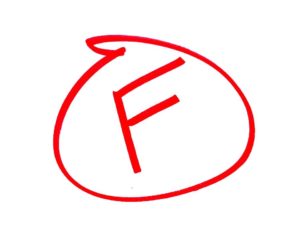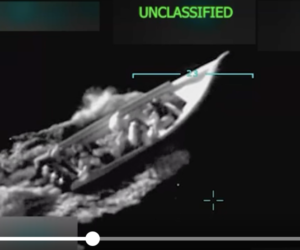Now that the consensus is that Flight 370 crashed in the Indian Ocean, west of Perth, Australia, the next steps — after ascertaining that any retrieved debris does in fact belong to the ill-fated airliner — will be to attempt to retrieve the flight recorder and to hopefully locate the fuselage.
These tasks will not be easy, as the search will take place in waters that range in depth from about 10,000 to 15,000 feet and are some of the world’s most treacherous. On the bright side — if there is any — the Guardian notes that the flight recorder from the Air France plane that crashed into the Atlantic Ocean in 2009 was retrieved from a depth of more than 18,000 feet, “and two years after the event.”
Very specialized systems, equipment, skills and procedures are required for such an undertaking in which the U.S. Navy will be a key participant.
U.S. Pacific Command has already ordered a black box locator, a “Towed Pinger Locator 25,” moved to the region where the search is focused, according to the American Forces Press Service (AFPS).
The Towed Pinger Locator (TPL) 25 System used for locating emergency location pingers on downed Navy and commercial aircraft at a maximum depth of 20,000 feet anywhere in the world. (U.S. Navy photo)
“In the event a debris field is located, we’re moving some specialized locator equipment into the area,” said Navy Cmdr. Chris Budde, U.S. 7th Fleet operations officer. “The Towed Pinger Locator has some highly sensitive listening capability so that if the wreck site is located, we can hear the black box pinger down to a depth of about 20,000 feet. Basically, this super-sensitive hydrophone gets towed behind a commercial vessel very slowly and listens for black box pings.
If found, the acoustic signal of the pinger is transmitted up the cable and is presented audibly, and can be output to either an oscilloscope or a signal processing computer, 7th Fleet officials explained. The operator monitors the greatest signal strength and records the navigation coordinates. This procedure is repeated on multiple track lines until the final position is triangulated.
The U.S. Navy is also sending a “Bluefin-21 autonomous underwater vehicle” to Perth, Australia.
The autonomous underwater vehicle has sophisticated sonars that could be used to locate wreckage. The equipment has already left New York for Australia and should be there tomorrow, Pentagon Press Secretary Navy Rear Adm. John Kirby said today, according to the AFPS.
Above, the NRL Reliant autonomous underwater vehicle (AUV), an advanced version of the Bluefin Robotics, Bluefin-21 vehicle, is the prototype for the new U.S. Navy Knifefish mine-hunter. (Photo: U.S. Naval Research Laboratory)
“There will be a small number of people going along with them,” Kirby added, explaining that there will be two personnel on the flight with the equipment and that another eight will be flying separately to Perth to prepare the equipment.
Although no debris has been identified yet, Navy Adm. Samuel J. Locklear III, the commander of U.S. Pacific Command, “made a very prudent and wise decision to move the equipment that could be useful should a debris field be found, or should we think we can get close to where the black box may be,” Kirby said. “He made a decision to get that gear there now so that, again, should we be in that position, it will be a lot easier to get it on station.”
Both devices will be placed aboard the Australian commercial ship “Seahorse Standard” should they have to go out to sea, ABC reports.
Jim Garamone at AFPS concludes:
The Bluefin autonomous underwater vehicle is an underwater unmanned vehicle that has side-scanning sonar and a multi-beam echo sounder. It would be useful should there be a debris field or other underwater objects that need to be examined. The Bluefin can dive to 14,700 feet, and has an endurance of 25 hours at three knots.
If needed, the equipment will operate off an Australian commercial ship. Neither piece of equipment needs to be embarked on warships.
Lead Image: www.shutterstock.com



















